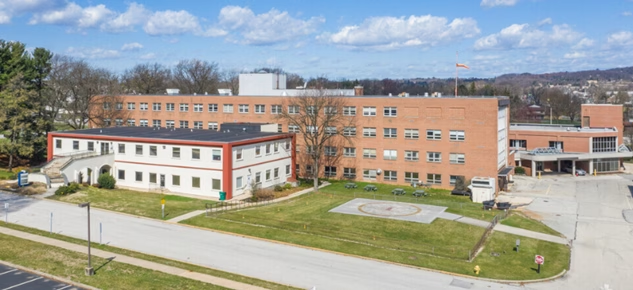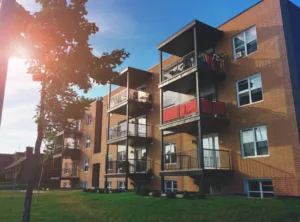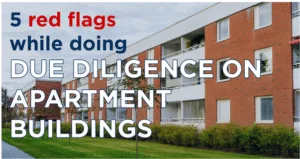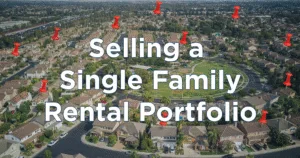What do you do with that OLD outdated Office/Church/Motel/School/Warehouse/Hospital?
Many entrepreneurial investors take these properties and turn them back into living spaces with modern amenities.
But, the path to do so is often more complicated than even seasoned investors are prepared for when they set out. Today we are looking at a case study where a building was redeveloped, and share some strategies for success along the way.
Our investor client in this case was a successful entrepreneur. With many apartment units under his belt over the years, he was ready to take the next step with his investments. We’ll call him Michael.
Arise the perfect opportunity- a 175,000 SF, 10 acre site of pure promise – a former hospital building. After sitting vacant for years on the market, the owner of this purpose built property was ready to unload it at an auction.
Come auction time- even the highest bidder was not ready to meet the reserve price. The uncertainty for this size of an investment kept many investors carefully guarded. At the end of the auction, Michael, at the highest bid position was awarded the property, even though it was below the reserve.
Success!
Now comes the work.
Stage A- Planning:
1. Reduce Your Carrying Cost
– Tax Appeals
Many times these large vacant properties may have taxes that were based on the prior unique use, as this was for the hospital. An appeal showing the purchase price and similar comparables helped win a tax appeal, and then reduce Michael’s carrying costs while he planned.
– Cost Segregation Study
BEFORE the planning phases of a construction project, consulting with a cost segregation specialist can considerably increase the benefits of a Cost Segregation Study. Working in conjunction with the construction management team, they can provide a list of assets to be isolated and tracked during construction. Additionally, it is prudent to use this service before the start of an abandonment or redevelopment project in order to maximize and document the true value write offs prior to demolition.
2. Full review of zoning and building codes
While professionals like attorneys, architects and engineers are vital inputs into every conversion project, there is no substitute for knowing the parameters and advocating for yourself. Michael did this with the zoning, and was able to refute a limiting clause that the zoning had, by becoming familiar with the zoning provisions. The task of being their own advocate is best filled by the active investor who has the most at stake.
Review of code requirements, with your architect and contractors, can expose many things investors do not initially take into consideration. Adding a sprinkler system, making a building ADA accessible, and environmentally safe (mold, asbestos, lead, and more) are all items that have been a showstoppers for these projects.
3. Take time to plan thoroughly
Many investors we have seen may make quick judgement calls, and miss out on major opportunities or needs in the market. With a clean slate, it is the perfect chance for an investor to maximize their return by carefully gauging what their clientele will need.
For Michael, this was realizing his property was in a premier school district, and with very limited apartment competition, it was beneficial to plan more 3 bedroom apartments than a project may normally have, to serve the families who would likely be attracted to the location for the school district and nearby park.
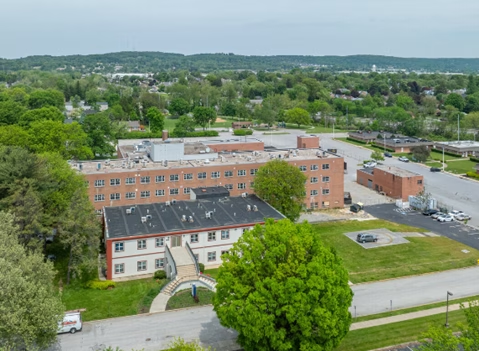
Stage B – Construction:
1. Hire a contractor with a “solution based” focus
While many investors may be tempted to be their own GC- if you do not have the experience, this can cost you much more than it saves. An experienced contactor can be a huge resource on unique conversion projects by bringing their experience to help solve the problems that come up.
And come up they will.
The more experience you have on your side to solve the problems in an economical way, the better off your project will be, and the faster it will get done.
Michael started out with a plan that was modified and changed multiple times because of the unexpected, but he said their ability to adapt grew as they moved farther into the project and learned to navigate through each problem, along with the help of his construction team.
2. Budget Contingencies
Get ready. The budget.
It will never be what you think it will be! Michael said in their case unexpected costs of up to 30% of their original budget was added on top. And that was with them working diligently to keep the costs under control.
Always add a significant contingency, knowing it will be used along the way for the unexpected items that come up.
Because of the unexpected costs to renovate buildings like this hospital, often times investors consider going the route of tearing the building down and starting over. This was the case for this hospital- several prospective purchasers before Michael wanted to tear the building down. However, adding demolition costs of a massive building like this one, on top of an expensive piece of land, plus the new costs of construction- together make this path a challenge as well.
Stage C- Lease up:
1. Marketing
The delicate dance between marketing and construction- you want beautiful move in units to show prospective residents, but don’t want to wait until the property is move in ready to advertise.
Ideally a teaser list showing location, pricing and ‘similar unit’ photos can be the perfect start to get a jump start on leasing for when you are ready to open.
2. Leasing
As you bring tenants in and sign leases, remember to stagger the leases, so all your renewals are not hitting at mostly the same months. A fast lease up is great, but if they all sign one-year leases close together, your turnover exposure can be too high in the future. Remember to stagger the leases and limit endings in the winter months.
We have seen many beautiful renovation projects that once complete, lease up very quickly, but come next summer when all those renewals hit at the same time- you will be wishing you remembered this one!
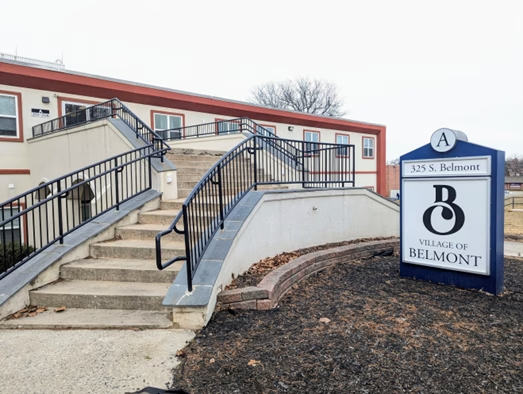
Conclusion
As Michael says- “It may look easy from the outside- but there is a whole lot more to it than what you think!”
If you are considering a redevelopment project as an investor, this can be a great way to build massive equity in a shorter window of time and take your investing to the next level. Continue forward with confidence, watching carefully the items we covered here today to move into your next level of success.
Many investors we work with appreciate our knowledge of many facets of investment real estate to help them grow their wealth quickly while avoiding showstopping mistakes. Call us for a consultation to help build your real estate portfolio.

